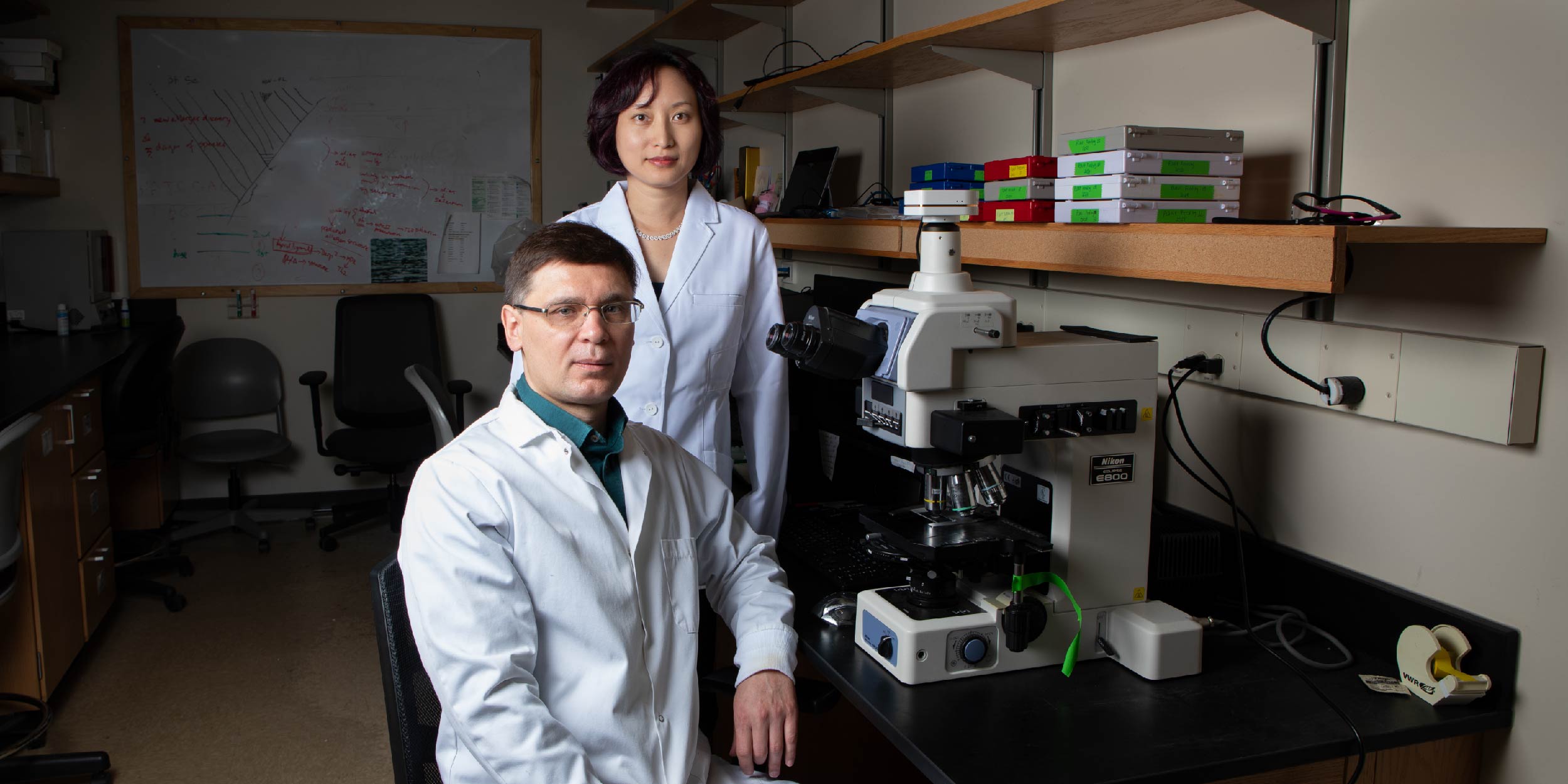Purdue Researchers Create Database to Predict Parasitic Mite Host Jumps
07-11-2024

Imagine waking up with relentless itching, only to discover tiny, unwelcome guests on your skin.
While this scenario may seem rare, the microscopic mites responsible for these irritations are more common and diverse than many realize. For example, humans, dogs and cats house three, eight and seven species of mite parasites, respectively. Some of these small parasites are loyal to a single host species, while other can attack multiple hosts. They can cause significant health issues when they transition from their usual animal hosts to humans. Understanding the factors that influence a mite’s ability to switch hosts is crucial. Researchers in the College of Science at Purdue University have taken a significant step forward by developing a predictive database to assess the likelihood of single-host mites becoming multi-host parasites, with important implications for public health and biodiversity.
In an innovative study led by Qixin He, an assistant professor of biological sciences, and Pavel Klimov, a postdoctoral scholar and lead author, the research team has compiled a comprehensive database of mammalian-mite associations. Published in Nature Communications, this database includes information on 1,930 mite species across 1,424 mammal species, providing an extensive resource for understanding host-parasite interactions.
He and Klimov’s research aims to predict the probability of mites transitioning from single host to multi-host parasites. This transition is significant because it can lead to broader epidemics and affect a wider range of species, including humans. By analyzing a variety of ecological and evolutionary factors, the team has identified key predictors for these transitions, offering insights into how and why certain mites expand their host range.
“Our goal was to create a tool that could help scientists and public health officials anticipate and manage potential outbreaks of mite infections,” said He. “By understanding the underlying mechanisms that drive host-switching in mites, we can better predict and prevent the spread of these parasites.”
The predictive model developed by the team considers several factors, including mites’ interaction with the host immune system, the phylogenetic relatedness of hosts, the geographic distribution of hosts, and the human disturbance of habitats. This multi-faceted approach allows for a more accurate prediction of host-switching events, which can inform both conservation efforts and public health strategies.

Klimov highlighted the importance of this research for biodiversity and conservation. “Mites play a crucial role as parasites in ecosystems, and understanding their interactions with hosts is essential for maintaining ecological balance,” he explained. “Our database and predictive model can help identify mammal species at risk and guide conservation efforts to protect vulnerable wildlife populations.”
By integrating data from diverse fields such as ecology, evolution, and biogeography, He and Klimov have created a valuable resource for researchers worldwide. The database and the predictive model are now available to the scientific community, providing a foundation for future studies on host-parasite dynamics. He and Klimov hope that their work will inspire further research and collaboration in this field, ultimately leading to better predictors for new diseases. For example, it can help to predict and mitigate the impacts of mite infestations on endangered species. By identifying at-risk species and potential outbreak hotspots, conservationists can implement targeted measures to protect vulnerable populations.
Building on this foundation, their ongoing research will dig deeper into the genetic and behavioral adaptations that enable mites to successfully switch hosts. By combining genetic sequencing with field observations, the team aims to uncover the molecular mechanisms underlying these adaptations. This deeper understanding could pave the way for novel interventions to disrupt the transmission cycles of mite infections.
Moreover, the database's application extends beyond human health. It serves as a crucial tool for wildlife management, helping to predict and mitigate the impacts of mite infestations on endangered species. By identifying at-risk species and potential outbreak hotspots, conservationists can implement targeted measures to protect vulnerable populations.
In essence, He and Klimov's database and model are results of interdisciplinary research and collaboration. It not only advances our understanding of host-parasite interactions but also provides practical tools to safeguard both human and animal health. As the scientific community continues to build on this work, the insights gained will be instrumental in addressing the complex challenges posed by parasitic mites in a changing world.
About the Department of Biological Sciences at Purdue University
Purdue Biological Sciences is the largest department in the Life Sciences at Purdue University. We are dedicated to pioneering scientific discoveries and transformative education at the cutting edge of innovation. From molecules to cells, from tissues to organisms, from populations to ecosystems - we bring together multiple perspectives, integrating across biological scales to advance our understanding of life and tackle the world’s most pressing challenges. Learn more at bio.purdue.edu/.
Writer: Alisha Referda, areferda@purdue.edu
Source: Qixin He, heqixin@Purdue.edu
Pavel Klimov, pklimov@purdue.edu